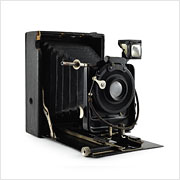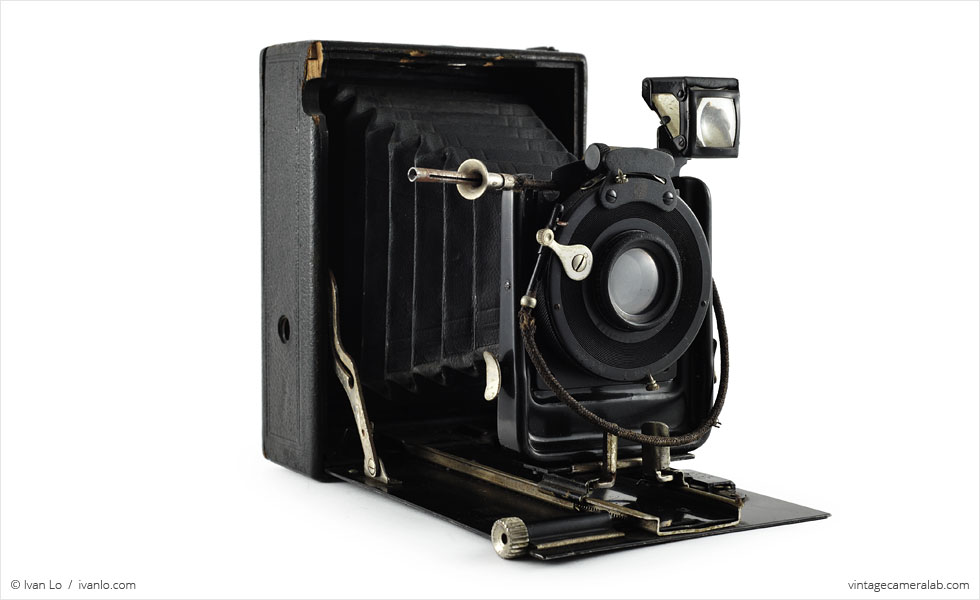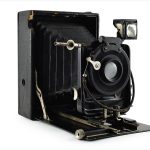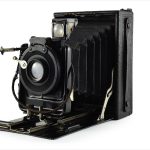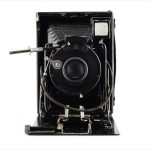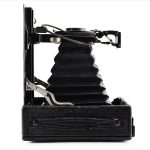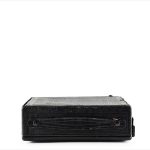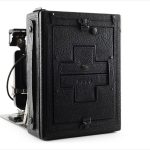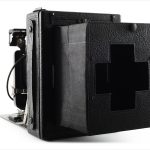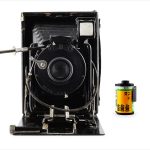Ernemann Heag II Specifications
| Manufacturer: | Ernemann-Werke AG |
| Origin: | German Empire |
| (modern day Germany) | |
| Made in: | Dresden, German Empire |
| (modern day Germany) | |
| Introduced: | 1913 |
| Type: | Folding, View Camera, Viewfinder |
| Format: | 10 x 16 cm Film Sheets |
| Dimensions: | 11.5 x 15.3 x 5.3 cm (closed) |
| 11.5 x 15.3 x 9.3 cm (open) |
Ernemann Heag II Overview
The Ernemann Heag II is a multi-format folding camera introduced in 1913 by Ernemann. Founded in the German city of Dresden in 1889, the company manufactured still cameras, cinema cameras, and projection equipment. After Germany lost World War I, the Treaty of Versailles meant that the country had to pay an exorbitant amount of money in reparations (approximately 442 billion USD in today’s economy, a vast sum they finally paid off in 2010) which left its economy in utter ruin. The German camera industry floundered, forcing Ernemann to merge with three other companies (ICA, Goerz, and Contessa-Nettel) to form Zeiss Ikon in order to stay afloat.
A hidden button on the top opens the camera, revealing the lens which then needs to be extracted by squeezing the two metal brackets underneath the Doppel-Anastigmat Vilar 135mm f/6.8 lens and pulling. Once the front standard is pulled to the end of the rail, focusing is done by pulling out and rotating the metal knob at the end of the platform. In addition to focusing, the lens also has vertical travel which can be achieved by squeezing the metal tabs on either side of the lens and pulling upward. The lens aperture can be controlled by sliding the small metal tab at the bottom of the lens while the shutter speeds (1-1/100 seconds, Bulb, and Time) are controlled by a similar tab located at the top of the lens. The shutter can be fired by either pressing the metal lever at the 10 o’clock mark on the lens or by using the permanently attached (and in my case, broken) cable release.
For composition, there are two options: a small, right angle viewfinder located above the lens or a large ground glass focusing screen on the back with an ingeniously designed expanding hood. This particular model of the Heag II (a Series I) is designed for 10x15cm sheet film with other versions also available for 9x12cm and 13x18cm sizes. The film is loaded into modular holders which, after the image is focused and composed, replace the ground glass module. A leather handle can be found on the user’s left hand side near a simple lock at the top of the camera which keeps the modules in place. Two tripod sockets can be found on the bottom and user’s right hand side of the camera.
Given its age, my Heag II is in relatively decent shape. One of the upper corners of the frame is chipped, all the metal parts are corroded, and the cable release is in very rough shape but everything else seems to be working fine otherwise. If you’ve read my other Ernemann articles, you’ll know that I’ve got a soft spot for these things regardless of condition.
Find your very own Ernemann Heag II on eBay.
McKeown, James M. and Joan C. McKeown’s Price Guide to Antique and Classic Cameras, 2001-2002. (Grantsburg, WI, USA: Centennial Photo Service, 2001), p 190, 197, 709.
